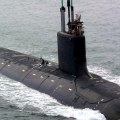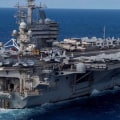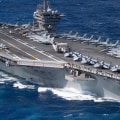Nuclear submarines are a powerful tool for military and scientific purposes. They are equipped with a miniature nuclear reactor on board, which uses highly enriched uranium as fuel. This allows them to travel faster and farther than conventional submarines, and to remain undetectable for longer periods of time. Nuclear submarines can also be used to launch intercontinental missiles, and to provide electricity for homes and industries.
In recent years, the Navy has begun to make its nuclear submarines more actively available to the scientific community. Nuclear propulsion, being completely independent of air, frees the submarine from the need to surface frequently, as is necessary for conventional submarines. This allows the nuclear submarine to transit from one area to another much faster than conventional ships, and also allows them to escape quickly and get far out of dangerous situations. The main difference between conventional submarines and nuclear submarines is the power generation system. Atoms in the nuclear reactor divide, releasing energy in the form of heat.
This heat is used to create high-pressure steam which rotates the propulsion turbines that provide the power to turn the propeller. Additional turbines also produce electricity for the ship. As the steam cools and condenses back into water, the water is directed back through the system and the process starts again. Nuclear submarines work in a similar way: each has its own miniature nuclear reactor on board, which uses highly enriched uranium as fuel. Navy ballistic missile submarines, often referred to as boomers, serve as an undetectable launch pad for intercontinental missiles.
They are specifically designed for stealth and accurate delivery of nuclear warheads. With the increasing attention paid to greenhouse gas emissions from the burning of fossil fuels for international air and maritime transport, in particular dirty fuel for the latter, and the excellent safety record of nuclear-powered ships, it is quite conceivable that a renewed attention to marine nuclear propulsion will be seen in the near future. Global merchant shipping is reported to have a total energy capacity of 410 GWt, approximately one third of that of global nuclear power plants. Since nuclear submarines are also very expensive to manufacture, it is generally not cost-effective or practical to build as many as diesel fleets. The United Kingdom's first HMS Dreadnought nuclear submarine was equipped with a US S5W reactor, supplied to Great Britain under the 1958 United States-United Kingdom Mutual Defense Agreement. Meanwhile, the International Campaign to Abolish Nuclear Weapons has warned that the plan to build at least eight nuclear submarines will isolate Australia from many of its neighbors in the region who want a nuclear-weapon-free Pacific. When nuclear reactors used to power submarines and aircraft carriers are eliminated, the Department of Defense maintains and monitors radioactive parts. The 14 Ohio-class US SSBNs (and four converted to SSGN for guided missiles) have a single 220 MWt S8G nuclear reactor delivering 45 MW shaft power.
China has about 12 nuclear-powered submarines (about 8 SSNs type 93, class Shang and class 95 Tang, approximately 6 SSBNs type 94, class Jin and type 9), and was building 21 more. The construction of the world's first nuclear submarine was made possible by the successful development of a nuclear propulsion plant by a group of scientists and engineers in the United States in the Naval Reactors Branch of the Bureau of Ships and the Atomic Energy Commission. Work on nuclear marine propulsion began in the 1940s, and the first test reactor was launched in the United States in 1953. Submarines were designed for rapid strikes with their ability to hunt and (if necessary) destroy enemy submarines or surface ships. Nuclear reactor compartments are trimmed, carefully sealed and taken to an approved disposal site. Some of the world's most serious nuclear and radiation accidents by death toll have involved nuclear submarine mishaps.



